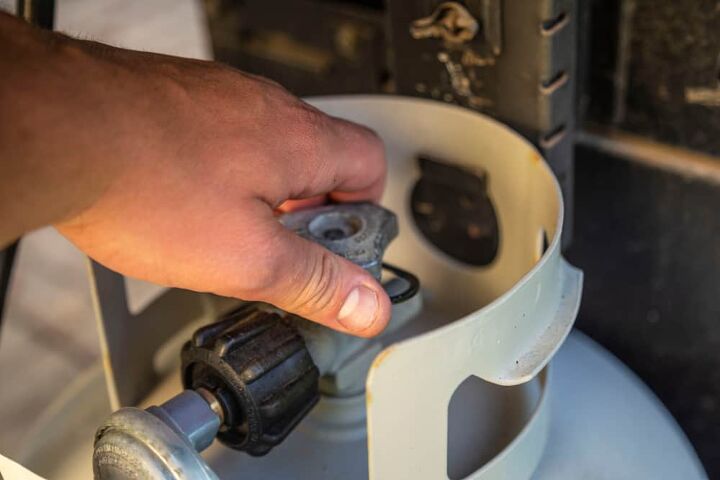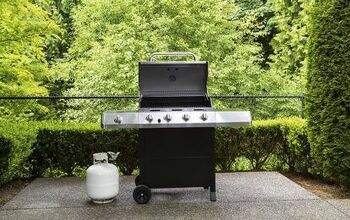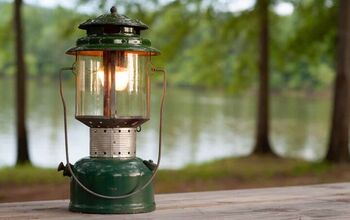How To Purge A Propane Tank (Quickly & Easily!)

Are you new to propane tank ownership? If so, then one of the first things you are going to have to do is learn how to purge a propane tank. New propane tanks come filled with pressurized air. In order to fill your propane tank, you’ll need to purge out all the air. It’s the only way to make your tank fillable. Before you hit up the tank store, getting the scoop on this procedure is a good idea.
Purging a propane tank is a fairly simple process. Here’s the step by step guide on how to do it:
- Connect your brand new, unused propane tank to a used (but full) tank using a line featuring both a bleed port valve and a regular.
- Move your valve to the “PURGE” mark, then turn your new propane tank’s valve as far counterclockwise as it can go.
- Open the other propane tank the same way, then slide that line valve to “CHARGE.”
- Wait until you can no longer hear gas traveling, then slide the line valve on the used tank to “PURGE.”
- Wait until you no longer hear gas, and then repeat the process four times.
This may seem like a fairly involved process, but it’s really easy and a must-do if you want to ensure that your propane tank functions properly. This guide will explain why this is such an important step, plus give you purging tips.
Why Do New Tanks Have To Get Purged?
The short and simple reason is that new tanks often contain impurities. These impurities include things like air, moisture, and sometimes even other things that find their way inside during manufacturing. This can make filling up your tank difficult, if not downright dangerous. In order to make sure that your tank is safe to use and can fill up, you will need to get rid of the impurities.
Purging, as the name suggests, is the approved way to get rid of impurities inside your tank prior to its use. All new tanks will need to be purged. Since poorly purged tanks won’t be able to fill to their maximum, you might end up seeing a difference in how long propane flames can stay lit.
What Happens If A Tank Is Not Properly Purged?
Though it may seem innocuous at the start, the truth is that those impurities can pose a threat to your tank. If you use your tank without purging, the impurities can affect your tank’s ability to dispense fuel. Moreover, certain types of impurities, such as water, can also cause your tank to rust from the inside out.
Rust can damage the integrity of your tank, as well as the overall ability to store propane efficiently. Unless you want to have holes in your tank or faulty flow, you’ll make sure that your tank is properly purged.
How Often Do Tanks Have To Be Purged?
There’s some pretty good news about purging tanks that most propane tank owners are well aware of. Most tanks will only need to be purged once. This is because a single session is enough to prep your tank from regular use.
Can You Ask A Gas Station To Purge Your Propane Tank For You?
For the most part, getting your propane tank purged at a gas station isn’t a good idea. In many cases, gas stations don’t have a used propane tank that is filled with enough propane to properly purge your tank. Moreover, even if they do, they may not know how to do it the right way. Some propane suppliers won’t fix your tank if it’s been purged by a random person.
If you need to get your tank purged and don’t want to do it yourself, the best option for you is to call your propane tank supplier to find out where you can go. Many suppliers have a pre-approved list of professionals who you can contact.
Can You Buy A Pre-Purged Propane Tank?
Though this wasn’t always the case, pre-purged propane tanks are now a thing. Most of the propane tanks that are sold without the need to purge will be marked “Pre-Filled” or “Pre-Purged.” People who want to avoid having to purge the tanks should check these tanks out. They’re more expensive than empty tanks, but owning a tank makes propane fills cheaper as years pass. So, it works itself out.
If You Have Water In Your Propane Lines, Can You Purge It Out?
Let’s say that you end up having a propane tank for a while, but you have reason to believe that excess moisture has gotten in your lines. This is actually somewhat common if you own an RV and use propane for fuel. It seems like purging would make sense, right? Well, not quite. Purging a tank (or the propane line) isn’t always a good idea here.
Condensation in a propane line is a sign that your tank may not be purged correctly. However, it can also be a sign of a leak, a chemical mixture, or something else. Each of these issues can have different fixes, and it’s not always easy to see which fix you need. As a result, you need to take a step back.
If this happens to you, call a professional propane service company. Ask them to inspect your system as well as your tank, then explain the situation. Water in a propane line can seriously harm your fuel, not to mention your burn. Thankfully, they’ll be able to fix it and prevent it from happening again.
How Much Does It Cost To Have A Propane Tank Professionally Purged?
For the most part, getting your tank purged by a professional won’t cost much. Many places will only charge for the cost of the fuel that you add into the tank during the purging process. However, the typical fee for a purge will include $3 to $5 on top of the cost of your fuel. This is just a nominal labor fee, so you don’t have to worry too much about it.
If you live in an area where propane tanks are not the norm, you might have a higher price for a purge. Some areas may charge a fee as high as $10 to $15 for a medium-sized tank.
Related Questions
Is it possible for a propane tank to freeze up?
Though it’s pretty hard, it’s not impossible to have a moment where your propane tank is too cold to function. Propane has a liquid point of -44 degrees Fahrenheit. If the tank is stored in an area that dips below that temperature, the propane will turn into liquid. This, in turn, makes it hard (or impossible) to remove from the tank.
Is finding frost on a propane tank a sign of danger?
Frost on a propane tank could be alarming, but it is not something to panic over. In most cases, having a little frost on your propane tank just means that, well, your tank is cold. In some cases of extreme weather, seeing a lot of frost over a propane tank might suggest that you won’t have propane for a while.Because it is possible to lose heating and gas in extreme cold, using propane is not always advisable as a heating element. If you live in an area prone to extreme cold (like, below -20 degrees Fahrenheit) then you may need to have a backup heat source for times when frost starts to cover your tank.
Is it cheaper to refill a propane tank or to exchange it?
While some methods of heating might be cheaper to exchange, the truth is that propane tanks are expensive. Since they are expensive to make and deliver, it’s actually cheaper to just refill your tank. That’s why buying a tank is considered to be an investment in long-term savings.Unless you are using small propane tanks for single-day camping cooking or similar uses, exchanging your propane tank will not make much financial sense. To ensure that you make things easier in your life, check out which propane suppliers service your area before you make a commitment to refueling instead of exchanging. You might save some money!
Related Guides

Ossiana Tepfenhart is an expert writer, focusing on interior design and general home tips. Writing is her life, and it's what she does best. Her interests include art and real estate investments.
More by Ossiana Tepfenhart



























